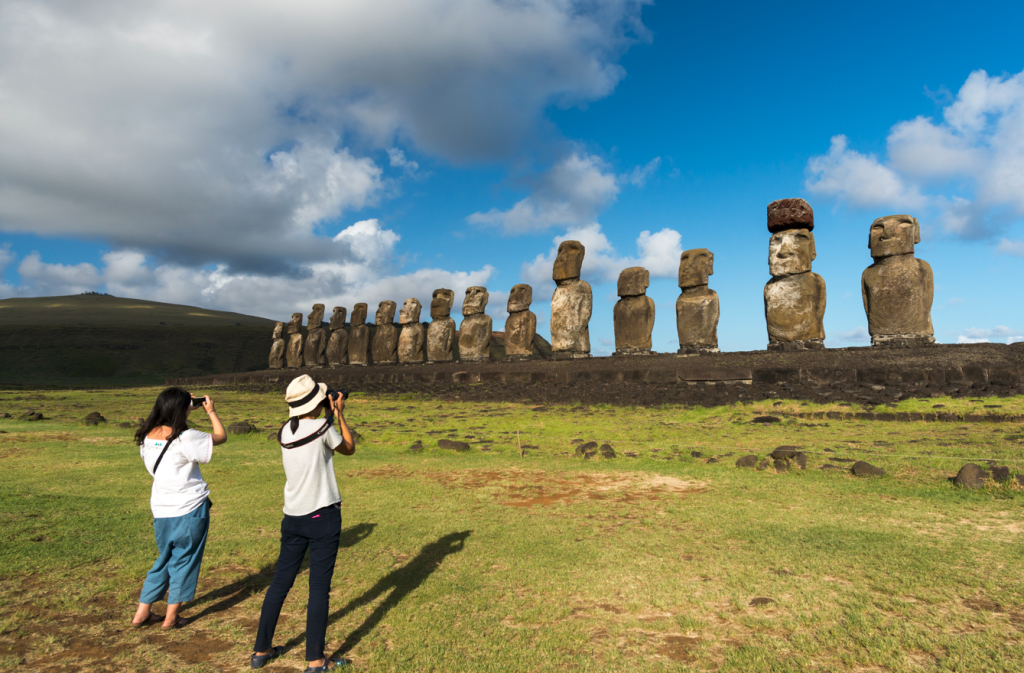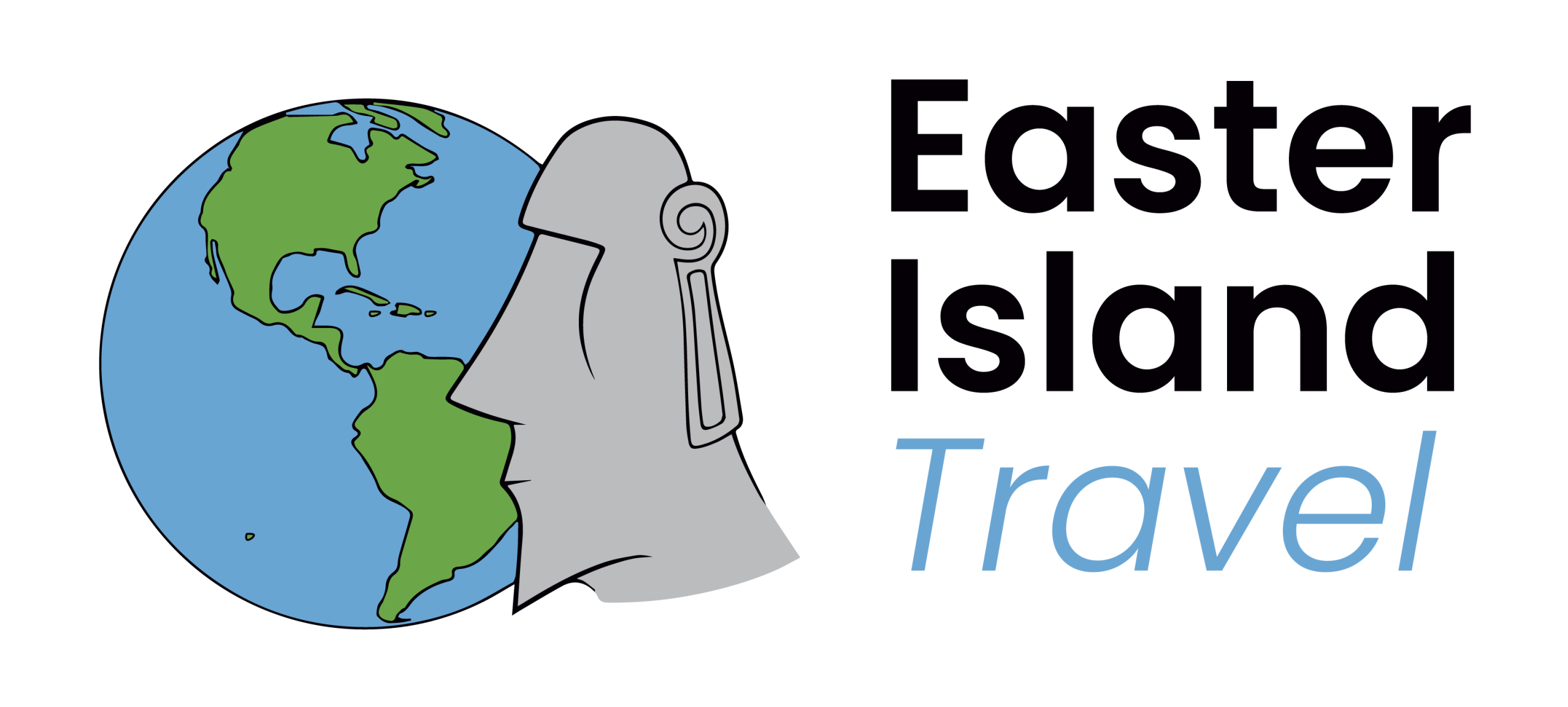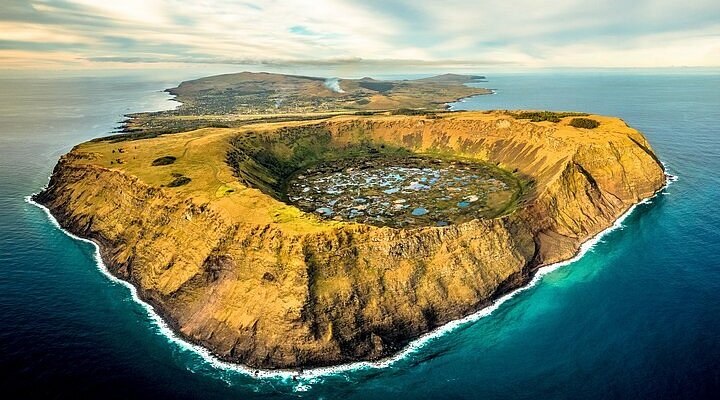How Did Rapa Nui Emerge? A story that began beneath the sea
When you arrive on Rapa Nui that small, remote island in the middle of the Pacific Ocean, it’s easy to forget that its story began deep underwater.
Rapa Nui, also known as Easter Island, is entirely volcanic. It was born from submarine eruptions that started over three million years ago, when the ocean floor split open and magma rose from the Earth’s interior.
Over time, these eruptions built solidified lava mountains that eventually emerged above sea level, forming volcanic cones. Centuries of erosion, wind, and waves sculpted the cliffs, valleys, and rugged landscapes we see today.
Every rock, hill, and moai carries part of this dramatic geological origin.

Timeline of the Main Volcanoes

Rapa Nui is not the result of a single eruption but rather the merging of three great volcanoes that rose at different times and locations, forming its characteristic triangular shape:
| Poike | ~3 million years | East | The oldest volcano; its basaltic lava formed the island’s original base. |
| Rano Kau | ~2.5 million years | Southwest | Features a 1.5 km-wide caldera with a freshwater crater lake surrounded by reeds (totora). Culturally significant for its ancestral connections. |
| Terevaka | Most recent (activity until ~110,000 years ago) | North | The youngest and highest (~507 m). Its vast lava flows linked the other volcanoes and shaped most of the island’s surface. |
These volcanoes gradually connected through overlapping lava flows, creating the triangular outline of modern Rapa Nui.

Was Rano Kau the First Volcano?
No, although many believe so. Geological studies indicate that Poike was the first to emerge, followed by Rano Kau and later Terevaka.
However, Rano Kau played a key role. Its large caldera (1.5 km wide) hosts a reed-covered lagoon that creates a humid, sheltered microclimate rich in biodiversity.
On the rim of the crater lies Orongo, an ancient ceremonial village with over 50 stone houses where the legendary Tangata Manu (Birdman) competition took place — one of the most significant rituals in Rapa Nui culture.
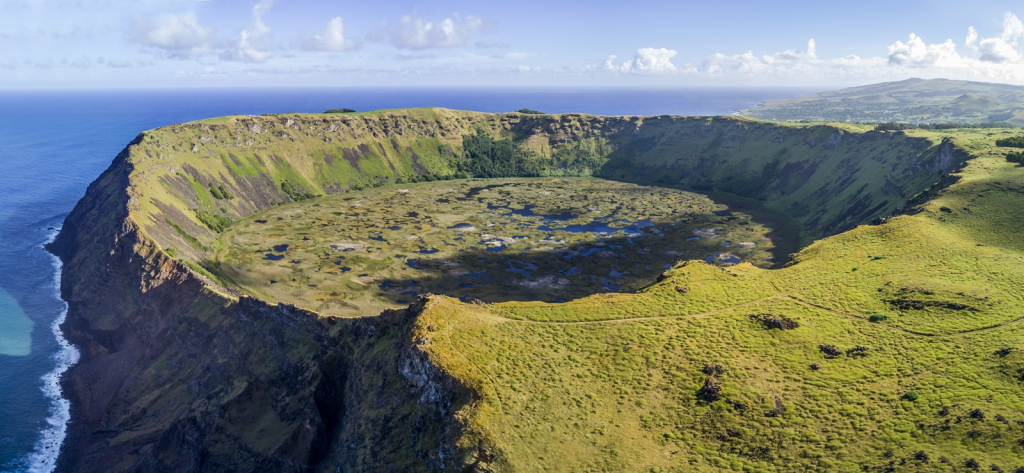
Poike: The Ancient Volcano
Poike is Rapa Nui’s oldest volcano, estimated to have formed about three million years ago. Its summit has been heavily eroded, giving it soft, rounded contours. On its slopes, you can still see ancient lava flows and layers of solidified ash.
The name Poike means “dry place,” reflecting its arid terrain — a stark contrast to the island’s greener areas. From its peak, the view of the Pacific is breathtaking.

Terevaka: The Guardian of the North
Terevaka is the youngest and tallest volcano on the island, rising about 507 meters above sea level.
With multiple eruptive centers, its lava spread widely, connecting the other volcanoes and forming the unified island we see today. For travelers, climbing Terevaka is an unforgettable adventure walking over ancient lava fields and grassy trails where the horizon seems endless.

The Cultural Importance of the Volcanoes
These three volcanoes didn’t just shape the island’s geography, they also shaped the identity of the Rapa Nui people:
• They provided the volcanic rock used to carve ahu (ceremonial platforms), moai, and other archaeological structures.
• They produced mineral-rich soils that, despite being thin and fragile, supported agriculture through adaptation and ingenuity.
• Their craters and calderas became sacred spaces filled with spiritual meaning.

The Volcanic Soil of Rapa Nui
The island’s soil comes from the breakdown of volcanic rock. It’s mineral-rich but only moderately fertile: the top layers are thin and have eroded over time.
To overcome this, the ancient Rapa Nui developed manavai circular stone enclosures that served as protected gardens, conserving moisture and sheltering crops from the wind. This clever system reflects their deep respect and understanding of nature.

The Moai: Sculptures Born from Fire
Rapa Nui’s iconic moai were carved almost entirely from volcanic tuff, a rock formed from compressed ash.
The main quarry was the crater of Rano Raraku, an extinct volcano that served as a sculpting workshop for centuries. Today, hundreds of unfinished moai remain there, frozen in time.
Each monolith reflects not only the craftsmanship of the ancient Rapa Nui but also their profound connection with the volcanic land that sustained them.
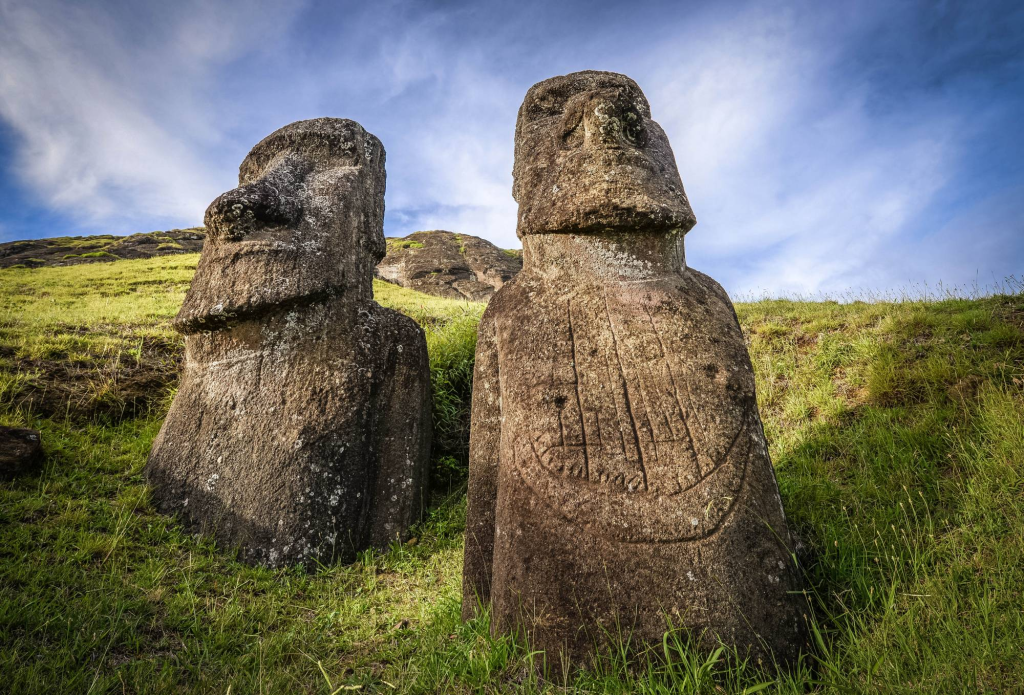
Discover These Volcanoes with Our Tours
At Easter Island Travel, we invite you to explore the living geology of Rapa Nui through guided experiences that blend nature, history, and culture:
• Tour A Journey of legends – Visit Anakena, Te Pito Kura, Puna Pau, Ahu Akivi, Tahai, Rano Kau, and Orongo.
• Tour B Megaliths – Explore Vinapu, Hanga Poukura, Vaihu, Akahanga, Rano Raraku, and Ahu Tongariki.
• Express Tour – Includes Orongo, Rano Kau, Rano Raraku, Ahu Tongariki, and Anakena.
• Terevaka Hike – A trek to the island’s highest point for panoramic 360° views.
• Poike Adventure – Climb the remote Poike volcano for stunning vistas and ancient remnants.
• Boat Trip to Motu Nui – Sail along Rano Kau’s cliffs and learn about the Birdman competition.
• Volcanic Caves – Discover ancient lava tunnels and hidden caves in the island’s western and central areas.
An Island Born of Fire and History
Rapa Nui is more than an exotic destination it’s a living testament to the power of the Earth. Every volcano, crater, and moai tells the story of an island born from fire, shaped by waves, and defined by its people.
With Easter Island Travel, you’ll not only see Rapa Nui you’ll feel it: a profound connection between geological origins and cultural heritage that still lives in every corner of the island.
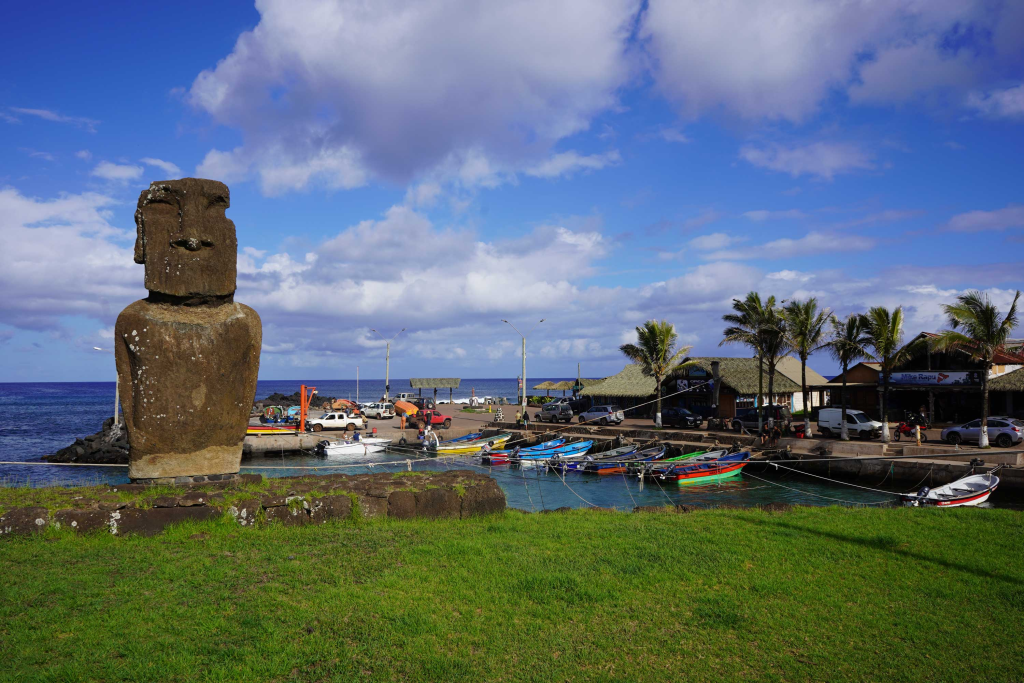
Learn More About Rapa Nui’s Volcanic Origins
If you want to dive deeper into the island’s geological and cultural history, here are some reliable sources that complement this article and offer valuable insights into Rapa Nui’s fascinating birth:
- VolcanoDiscovery – Easter Island: Detailed geological information, maps, and scientific data on the island’s volcanoes.
- Ministry of Public Works (Chile): Technical studies on the geological and geomorphological formation of Easter Island.
- Memoria Chilena – Rapa Nui: A comprehensive historical and cultural archive about the island and its people.
- Imagina Rapa Nui – Terevaka Volcano: Tourism and natural information about the island’s youngest and highest volcano.
Perfect for curious travelers, geology enthusiasts, and anyone who wants to understand how fire, sea, and time gave life to this natural museum in the middle of the Pacific.
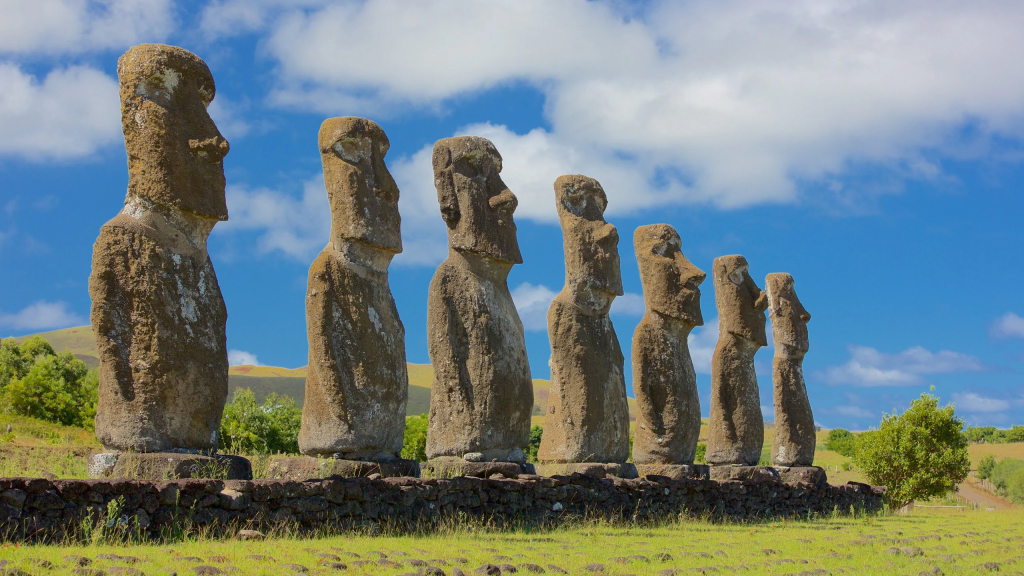
#RapaNui #IslaDePascua #VolcanesRapaNui #Viajes #TurismoChile #Geología #IslaVolcánica #Aventuras #DescubreRapaNui #Naturaleza #HistoriaRapaNui #Moai #ViajeRapaNui
